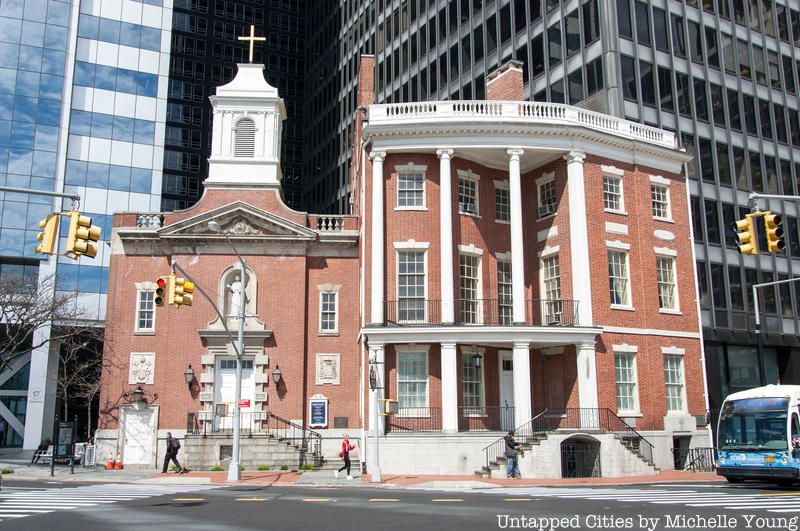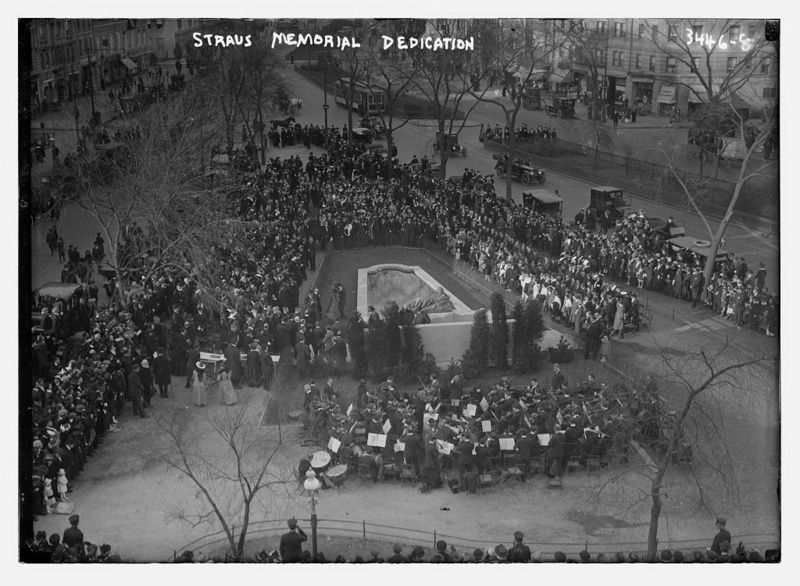NYC’s Forgotten ‘War on Christmas Trees’
Discover how an obscure holiday crackdown affects festive street vendors today!

Uncover memorials and historic buildings in New York City tied to the tragic sinking of the Titanic.

Just four days into its maiden voyage from Southhampton, England to New York City, the RMS Titanic, the “unsinkable ship,” hit an iceberg. The tragic sinking that followed, taking place over the final hours of April 14th into the early morning of April 15th, resulted in the loss of over 1,500 lives. While most of the passengers who set out for New York City didn’t make it to their final destination, just over 700 survivors eventually did make it to Manhattan.
New York City is inextricably linked to the infamous story of the Titanic and contains physical remnants of the incident. More than 110 years after the disaster, here are present-day sites that connect New York City to the history of the Titanic:

The shoreline of Manhattan was the intended destination for the Titanic‘s doomed Atlantic crossing. The ship, run by the White Star Line, set sail from England and headed toward Pier 59 at Manhattan’s Chelsea Piers. In the 19th century, the Cunard and White Star Lines were the most popular ocean liner operators. The RMS Carpathia, run by the Cunard Line, had set sail from Manhattan just a few days before April 14th and was headed to Europe. On the fateful night of April 14th, it received the Titanic’s distress call. After retrieving over 700 survivors from the frigid icy waters of the Atlantic, the Carpathia reversed course and headed back to New York City.
On April 18th, the Carpathia did make a quick stop at Pier 59 to drop off the Titanic’s lifeboats, before docking at Pier 54 to let off its passengers. While the original pier building that once stood there was destroyed in 1991, a metal frame of the facade still remains to this day. You can even make out the words “Cunard White Star,” a remnant of when the two companies merged in the 1930s.
Now, the metal frame serves as an entryway to the newly constructed Pier 55 park, Little Island. Pier 54 had a bit of an unlucky streak. Just three years after the sinking of the Titanic, the Pier served as the starting point for the RMS Lusitania. Five days later, the ship bound for Liverpool was sunk by torpedoes from nearby German U-boats just off the coast of Ireland.

The Jane Hotel, located at 113-119 Jane Street, was originally built in 1907-08 as the American Seamen’s Friend Society Sailors’ Home and Institute. The purpose of this facility was to welcome sailors arriving at the piers on the Hudson River and offer them an alternative place of respite instead of the seedy waterfront dives, saloons, and boardinghouses available. The Institute comprised a hotel, a home for indigent sailors, and amenities such as a swimming pool, a bowling alley, a concert hall, a library, a chapel, and billiard rooms. In April 1912, the Institute housed a special group of guests, survivors of the Titanic disaster.
After the survivors arrived at Pier 54, many different charitable organizations stepped in to help care for and house the survivors who didn’t have family in New York to take care of them. Crewmembers of the ship were given shelter, food, and clothing at the Sailors’ Home and Institute. They also received money from a collection that was drawn to help cover their lost wages. Four days later, the Institute held a memorial service for those lost in the tragedy. The building was run as a charitable facility for sailors until the 1940s, when it came under private ownership. Today, it is The Jane Hotel, a popular nightlife destination and hotel with budget-friendly rooms that still hold onto a nautical flair.

While crewmen went to the American Seamen’s Friend Society Sailors’ Home and Institute women from steerage were welcomed at the Mission of Our Lady of the Rosary for the Protection of Irish Immigrant Girls at 7 State Street, now called Our Lady of the Rosary Parish and the Shrine of St. Elizabeth Ann Bayley Seton. The Mission was founded by Charlotte Grace O’Brien and housed inside the former James Watson House. It served as a way station for young immigrant girls.
Many of the women in steerage on the Titanic were Irish immigrants. At the mission, the women were entertained with music to help lift their spirits. The thirty survivors housed the Mission at were also given $25 each from a collection for their benefit.

One of the most well-known connections to the Titanic disaster in New York City is the Titanic Memorial Lighthouse at the corner of Fulton and Pearl Streets in the South Street Seaport. The lighthouse originally stood atop the roof of the Seamen’s Church Institute at the corner of South Street and Coenties Slip (now Vietnam Veterans Plaza). It was always intended to be a memorial to the 1,500 lives lost in the tragic sinking of the RMS Titanic.
The landlocked lighthouse was designed by Warren & Wetmore (architects of Grand Central Terminal) and crowd-funded by New Yorkers from all classes. It was dedicated on April 15, 1913, one year after the sinking. What makes this landlocked lighthouse unique is the time ball on top which dropped every day at noon from 1913 until 1967. The lighthouse was last restored in 1976, but a new effort will see the memorial restored in the near future.

The offices at 5-11 Broadway were home to a variety of maritime businesses, including the White Star Line, the maritime company that owned the Titanic. Inside the grand Hellenic Renaissance-style building were offices for the American Line, the American Scantic Line, and other shipping businesses and firms, as well as the Merchant Marine and the Navy. Constructed between 1895 and 1898, its interior columns were reportedly made of ship masts. The landmark is now the Bowling Green Offices.
On April 15th, as news broke of the Titanic’s sinking, concerned family members of people on board crowded the entrances to the office building, hoping to hear news of their loved ones. There was a similar scene at the White Star offices in London, where the New York Times reported officials posted a list of names of known survivors.

Many of the passengers on the ship were from wealthy and notable New York families such as the Astors. Henry Clay Frick, J.P. Morgan, and George Washington Vanderbilt had tickets but didn’t sail. Some of the more well-to-do families of victims lost in the sinking erected elaborate memorials across New York City. One such memorial can be found at Straus Park. There, visitors will find a memorial by sculptor Augustus Lukeman and architect Evarts Tracy dedicated to the memory of Isidor and his wife Ida Straus.
The memorial features the reclining figure of a mourning woman over a fountain and the inscription, “In memory of Isidor and Ida Straus who were lost at sea in the Titanic disaster April 15, 1912, Lovely and pleasant were they in their lives and in their death they were not divided.” Originally from Germany, the Strau family moved to America in 1854. In 1888, brothers Isidor and Nathan became owners of R.H. Macy & Co. and opened the world’s largest department store at Herald Square. Other memorials to victims can be found at Grace Church on West 10th Street and Broadway where there is a memorial to Edith Corse Evans, in Central Park at 91st Street and 5th Avenue where there is a memorial to journalist William T. Stead, and at the Cathedral of Saint John the Divine where a window is dedicated to John Jacob Astor IV.
Next, check out 10 Maritime Memorials in NYC
Subscribe to our newsletter